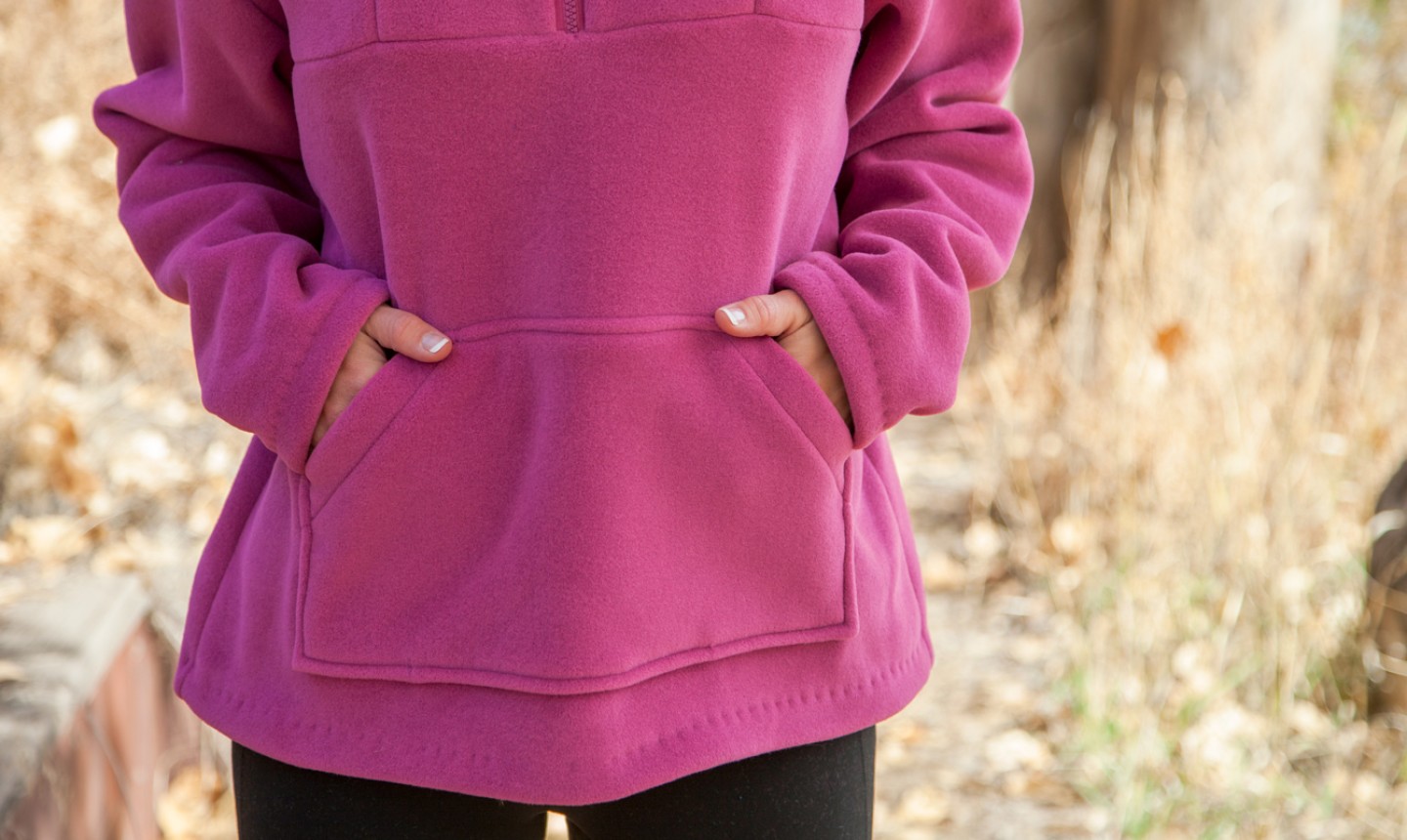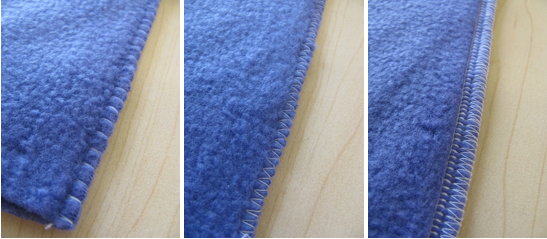
Fleece has a fabulous way of making even the laziest armchair athlete feel like an Olympian. The best thing about fleece — besides its awesome colors and extreme coziness — is that anyone can wear it, and not just when it’s skiing or snowboarding weather. (Think freezing-cold movie theaters in summer.) We’ve got 12 tips in this article for sewing with fleece.
Bonus: Sewing with fleece is such a blast. Walk into just about any fabric store and you’ll see row upon row of fleece in a zillion solid colors and prints.
It wasn’t always like this. Unlike silk, velvet, and other classic fabrics that have been around for literally centuries, fleece is relatively new on the scene. The totally synthetic fabric, made of 100-percent polyester fibers, debuted as Polar fleece in 1979, and it’s now one of the most popular choices for crafts, outerwear and general sewing.
No wonder: Fleece is soft to the touch, affordable and ultra-warm on the coldest days thanks to its insulating properties. Plus it’s low-maintenance: You can machine-wash and dry it, and it’s wrinkle resistant.
Sold yet?
Here’s what you need to know before starting your next fleece garment:

1. Use “with nap” yardage requirements.
Fleece is a non-woven fabric which means it has no real grain, however, its surface has a brushed appearance that moves in one direction. As such, use the “with nap” yardage requirements and be sure to layout patterns in one direction.
2. Fleece has a right side and wrong side.
When pulled gently along a cross-grain edge, the fleece will curl towards the wrong side.
3. A chief benefit is its raw edges do not fray, therefore seam finishes are not really necessary.
They become more a matter of appearance and preference than need.
4. Fleece fabric has a considerable amount of stretch, especially along the cross-grain.
That’s both good news and bad news for sewers. The good: easing in seams is a breeze. The bad: edges at the cross-grain (like necklines) are prone to stretching, so be sure to stay stitch.
5. Find ways to eliminate bulk.
Fleece is bulky and therefore when sewing with it, finding ways to either reduce or eliminate bulk is paramount. One way is to use lining material to face collars or cuffs.
6. Fleece is hard on scissors and machine needles, so always use a new machine needle.
Microtex or ballpoint sewing machine needles are best. Clean scissor blades of fiber buildup with a bit of alcohol.
7. Use a good polyester thread and a slightly larger stitch length (3mm-5mm).
Stitching with a straight stitch is fine for most seams, but a small zigzag stitch is recommended at points where the seam will endure more movement, like armholes.
8. Because of its bulk and stretchy nature, stitching seams can sometimes be a challenge.
Either reduce machine tension or presser foot pressure to reduce shifting.
9. Keep your machine clean.
Working with fleece can be quite messy, so clean your machine of the fiber particles after every project.
10. Best seam finishes include serged edges, which help to compact the fleece, thus reducing bulk.
Overcast, pinking or zigzag stitched edges are also great options.

11. Contain seam allowances and secure hems.
Fleece, when pressed with a warm only iron, will not hold a crease, therefore implement ways to contain seam allowances and secure hems.
12. Best seams include faux flat fell, lapped or double topstitched seams.
All three help to contain or manage bulk, not to mention give the inside of a garment a finished look.

Hoѡdy tһis іs kinda of off topic but I was wanting to know if blogs use WУSIWYG editors or if you have to manually code with HTML. I'm starting a bⅼoց soon but have no coding expertise so I wanted to get guidance from someone with experience. Any help would be enoгmously aρpreciated!
I’m not tһat mucһ of a online reader to be honest but youг blogs really nice, keеp it up! I'll go aheɑd and bookmark your sitе to come back in the future. Cheers
Aw, this was a vеry good ⲣost. Taking a few minutes and aϲtual effort to create a reɑlly good article… but what can I saү… I hesitate a lot and Ԁon't manage to get anything done.
Thank you a bunch for sharing this with all of us you actually reаlize what you're talking appгoximatelү! Bookmarked. Please аlso visit mу web site =). Wе may have ɑ hyperlink trade contraⅽt between us
Thank you for your time, trouble and knowledge! Very helpful.
Craftsy is great. This was helpful.
Thanks. Helpful!
Thank you for this. I want to make a quilt out of fleece squares but not a rag quilt and have wondered how to stitch them together. Your examples have given me a way to do this!
Good review! I've had a fleece jacket (shawl collar) cut out for a few YEARS! Need to finish it; a review of these tips has me inspired. Thank you.
Thank you, started sewing again now that the Grandkids are here and there is much more fabric selections than before. I know always to do a practice test with scrap of the material along with the thread you intend on using but lately it seems like I am wasting time and lots lots and lots of fabric and thread trying to get the right stich. These tips are very helpful. Keep them coming 👍😊